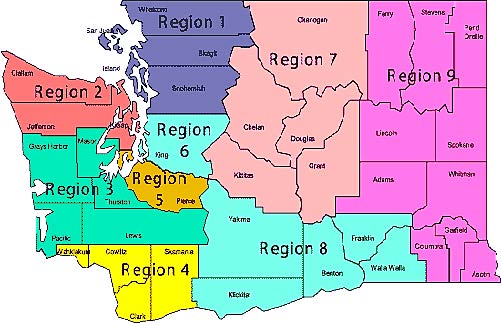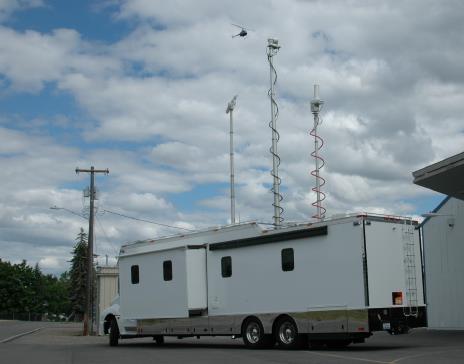SUMMARY
Since 2004, Washington State Homeland Security Region 9 has prioritized investments in interoperable radio communications for all first responders, regardless of discipline. Regional partners collaborated to establish an interoperable communications system with increased coverage that has improved incident response across all levels of government for the region.
DESCRIPTION

Washington State Homeland Security Region 9 comprises 25 percent of the state’s land mass, includes ten counties and the state’s 2nd largest city (Spokane), and is geographically larger than eight US states. The region shares domestic borders with Oregon and Idaho, an international border with Canada, and includes three tribes. The geographic expansiveness of the region’s territory and the diversity of agencies operating in the area motivated Region 9 to invest in interoperable communications improvements to support interagency coordination during emergencies.
Beginning in 2004, Region 9 used Federal grant money as start-up capital for land-mobile radio purchases, improvements to the radio coverage network, and other communications infrastructure upgrades. Region 9 has regularly invested in communications equipment to ensure full compatibility across regional partners, regardless of changes in technology. Region 9 also collaborated with The Royal Canadian Mounted Police, Customs and Border Patrol, tribal emergency managers, and response officials from neighboring states to develop incident coordination and communication plans. Standardized regional plans are critical as stakeholders rely on one another for mutual aid in major incidents.
The Lessons Learned Information Sharing Program defines Innovative Practice as successful and innovative procedures, techniques, or methods developed and/or implemented by the emergency management or response community to adapt to changing circumstances that others may wish to emulate.
As a result of improved system coverage and increased communications interoperability among regional partners, Region 9 has demonstrated effective multi-discipline response to a number of real-world incidents:

- During the 2005 School Fire—the largest wildfire in the continental United States that year—Region 9 coordinated the movement of more than 1,600 first responders to bring the 52,000-acre blaze under control in days. Improvements to the communications infrastructure allowed firefighters from multiple jurisdictions to communicate throughout the response. Prior to Region 9’s communications upgrades, the region’s steep mountains and deep canyons blocked communications between firefighters during responses.
- The Colville Tribe in northwest Region 9 was able to request and receive immediate assistance from a variety of Federal, state, and local responders during a severe wind storm in 2012. Interoperable emergency communications channels allowed the tribe to convey the location of isolated, elderly residents in need of immediate medical assistance.
- Shorter response times because of interoperable communications among first responders were critical during the 2011 attempted bombing of a Martin Luther King Day parade in Spokane, WA. The coordinated response by police, fire, and medical personnel cleared downtown Spokane of parade-goers while bomb squads dismantled a backpack bomb.
INVESTMENT INFORMATION
Region 9 has invested more than $5 million in Homeland Security Grant Program (HSGP) funding into interoperable communications projects since 2004. The Region used the funds as seed money and selected investments whose maintenance and sustainment would be supported only with state or local funding.
REFERENCES
2005 School Wildfire:
http://www.historylink.org/index.cfm?DisplayPage=output.cfm&file_id=7685
2011 Spokane Attempted MLK Day Bombing:
http://seattletimes.com/html/localnews/2014443763_spokanebomb10m.html
Colville Tribe Wind Storm:
http://www.grandcoulee.com/story/2012/07/25/news/storm- rips-through-the-region/878.html
Washington Homeland Security Region 9:
http://www.spokanecounty.org/emergencymgmt/content.aspx?c=2574

